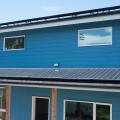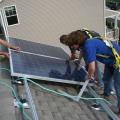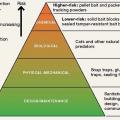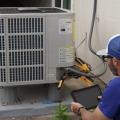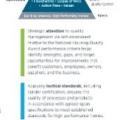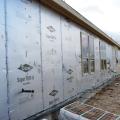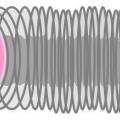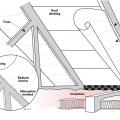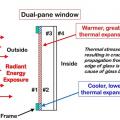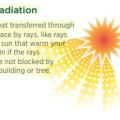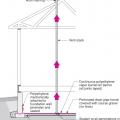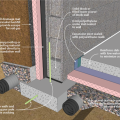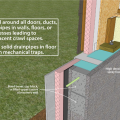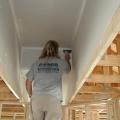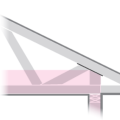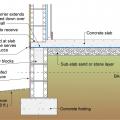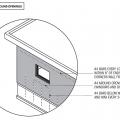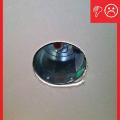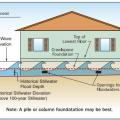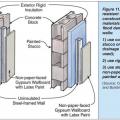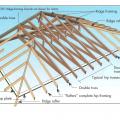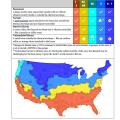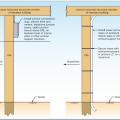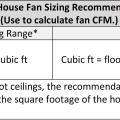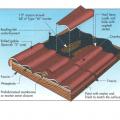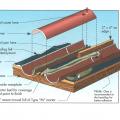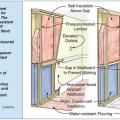Showing results 2151 - 2200 of 4973
PV panels provide shade while producing power over this 5-story multifamily project in San Francisco.
Quality installation and commissioning are critical to optimizing heat pump performance.
Quiet ENERGY STAR-rated exhaust fans provide spot ventilation and are integrated with the home’s fresh air ventilation system.
R-5 XPS rigid foam exterior sheathing provides an air seal, moisture barrier, and additional insulation value.
R-6 flexible duct has 2 inches of insulation around the inner liner so a 12-inch duct requires a 16x16-inch chase
Radiant barrier sheeting can be stapled to the underside of the rafters or along the inside edge of the rafters
Radiant heat energy from fires decreases with distance from the flames but is intense enough at close range to cause ignition.
Radiant heat from wildfires can crack windows by heating the exterior surface (#1) causing it to expand and crack when exposed to wildfire.
Radiation is heat transferred through space by rays, like rays of sun that warm your skin if the rays are not blocked by a building or tree.
Rain barrels and cisterns collect rainwater for landscape irrigation.
Raised ceiling chase sealed with drywall mud
Raised ceiling duct chase installation technique
Raised ceiling duct chase is not visible as finished product
Raised heel energy trusses extend past the exterior wall and are deeper at the wall allowing room for full insulation coverage over the top plate of the exterior walls.
Raised heel or energy trusses allow even the corners of the attic to be well insulated; this helps to prevent ice dams in winter and keeps rooms cooler in summer.
Raised-slab CMU foundation including flood-resistant features: sloped grade, damp proofed stem wall, capillary break under the slab (gravel or sand), vapor barrier under the slab and capillary break at the top of the foundation wall (polyethylene sheet)
Rater-measured duct leakage to outdoors ≤ 4 CFM25 per 100 sq. ft. of conditioned floor area
Rater-measured ventilation rate is within 100-120% of HVAC contractor design value (2.11)
Recommended construction for homes in Zone B (areas of moderate flood hazard between the 100-yr and 500-yr flood) and Zones C and X (areas of minimal flood hazard above the 500-yr flood).
Recommended flood resistant wall construction for concrete block walls with stucco or brick veneer.
Recommended Installation Locations for a Heat Pump Water Heater Based on the Climate Zone of Home
Recommended installation techniques for electrical and plumbing lines and other utility components in homes built on piers above the base flood elevation.
Recommended tile and mortar placement for extruded concrete flat tile roofing system
Recommended tree spacing for wildfire resistance within the three defensible space zones (Source: Preparing Homes for Wildfire
